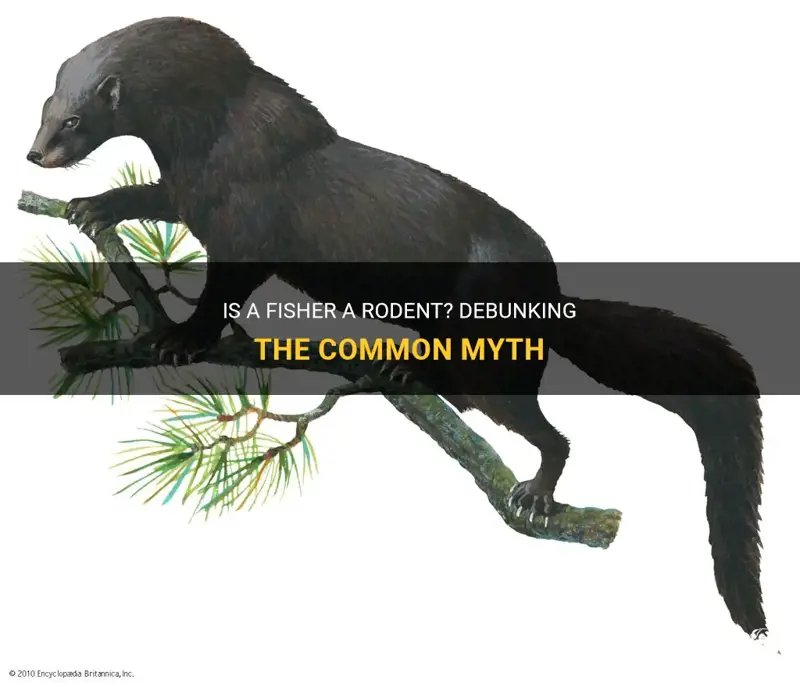
Imagine sitting in a cozy café, sipping on your favorite coffee. You casually ask your friend about fishers, and they start listing all sorts of wild stories. Most of these tales, like fishers being fierce killers of house pets or being highly dangerous to humans, are out of touch with reality. So, let’s unwrap these myths, dig deep, and see what the facts really say about the fisher.
Myth
A popular myth suggests that fishers are aggressive creatures that pose a real threat to humans. This misconception often comes from misunderstandings about their behavior. Here’s the thing: fishers are notoriously shy and tend to avoid contact with people at all costs. They’re more interested in finding a quiet spot to hunt for food than picking a fight with humans.
Fishers are small to medium-sized carnivores, and while they have sharp claws and teeth, those are primarily used for hunting. They are known to prey on various animals, like rabbits and even porcupines, but humans? Not so much. In fact, encounters are quite rare. If you see a fisher in the wild, it’ll likely scamper off before you even notice it.
Fishers Prefer to Stay Hidden
Imagine a spider hiding in the corner of your basement; it wants to avoid you just as much as you want to avoid it. Fishers have that same instinct. They thrive in dense forests and rugged terrains, making them excellent at staying out of sight. So, if you’re out hiking and spot one, consider yourself lucky!
Let’s not forget that these animals prefer to hunt during the night (they’re nocturnal), which also keeps them out of human sight during daylight hours. So, while the idea of a fisher lurking around might sound frightening, the reality is quite the opposite. They’d much rather keep their distance.
Myth
You might be wondering—are fishers really related to fish? Spoiler alert: they are not! In fact, the fisher is a member of the weasel family, known scientifically as *Martes pennanti*. They share more in common with weasels, otters, and minks than with any aquatic life.
Their name could be misleading, but it likely comes from old English where “fiscere” referred to a “fishing” creature, possibly due to their adept hunting skills. So next time you hear the term “fisher,” remember it’s about their hunting prowess, not their relationship with marine life.
Taxonomy Clarification
To clarify, fishers belong to a group of mammals known as *Mustelidae*. This family includes a variety of animals like badgers, ferrets, and woefully misunderstood otters. When you think of a fisher, just remember they are related to these playful and fascinating creatures. And no, they don’t have gills or fins!
Myth
You may have heard stories about fishers attacking cats or small dogs, which leads to worries about letting pets roam outdoors. While the fear is understandable, the truth is fishers are not the big bad villains some might think.
They tend to hunt smaller animals like rodents, rabbits, and even birds. While it’s possible for fishers to take on a small pet, it’s not common. Pets that are left outside unsupervised can be vulnerable to a whole range of threats, including larger predators. So, rather than blaming fishers, it’s best to keep a close eye on your furry family members.
Keeping Pets Safe
If you’re concerned, here are a few tips for keeping your pets safe:
- Supervise outdoor time: Instead of letting your pets roam freely, consider a supervised yard visit.
- Secure your yard: Make sure your fencing is tall and secure to prevent any animals from intruding.
- Stay informed: Know the wildlife in your area and understand their habits to better protect your pets.
A little caution can go a long way in ensuring your pets are safe, while also letting them enjoy the fresh air.
Myth
Another common misunderstanding is that fishers are on the verge of extinction. In reality, fishers are not considered endangered. Once, they faced significant population declines due to trapping and habitat loss. However, conservation efforts have helped them rebound over the years.
While their numbers vary by region, in many areas, fishers are actually thriving. They’re adaptable creatures that can make homes in various environments, from dense forests to suburban areas. Yet, like many wildlife species, they face challenges such as habitat destruction and climate change.
Conservation Progress
Thanks to concerted conservation efforts, fishers have seen a resurgence in states like Maine and Vermont, where they’ve been reintroduced after local extinctions. This comeback serves as a reminder of the positive outcomes that can come from protecting wildlife and their habitats.
Myth
If you think of fishers as slow-moving and clumsy, think again! Fishers are surprisingly agile and nimble. They can leap from tree to tree, scale vertical surfaces, and navigate rugged terrains with ease. Their long bodies and sharp claws provide them with serious climbing skills.
You might say they’re like the acrobats of the forest. When they’re hunting, you might find them gracefully bounding over rocks or maneuvering through the branches with impressive speed and precision.
Masters of Adaptation
Fishers have adapted well to their environment. They primarily hunt small mammals, but they also eat fruits and berries. This flexible diet helps them survive in fluctuating seasons, showcasing their skills in adaptability. So, the next time you think of fishers as clumsy creatures, remember their athleticism and cleverness!
Final Thoughts
Fishers are fascinating little creatures, and while myths can paint a scary picture, the reality is much different. These animals are not aggressive, nor are they related to fish or a major threat to your pets. Instead, they are skilled, shy animals that thrive in their natural habitats. Understanding the truth behind these myths can help us appreciate fishers and the roles they play in our ecosystem.
So, if you find yourself chatting about fishers over coffee, you can confidently share some facts that might surprise your friends. Instead of fearing these creatures, let’s celebrate them and the diversity they bring to our wildlife.

